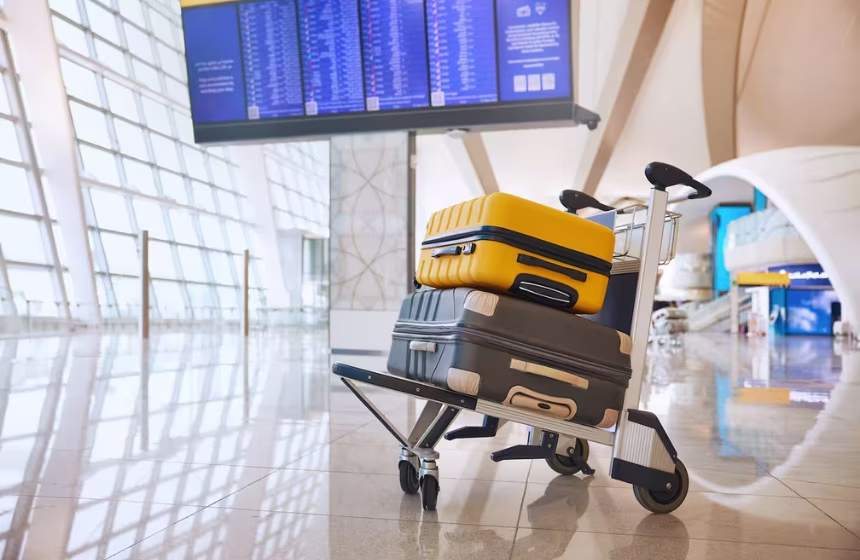If you’re planning a trip to Europe in the coming weeks, you might want to pause before hitting the “book now” button. Big changes are on the horizon for non-EU travelers, and knowing the rules before you pack your bags could save you time, money, and headaches. From new entry requirements to biometric checks, here’s the complete breakdown of what’s changing—and how to prepare.
1. What’s Changing?
Europe’s border policies are evolving to tighten security, streamline entry, and collect better data on travelers. Two key systems are set to roll out in the coming weeks:

- ETIAS (European Travel Information and Authorisation System) – This is not a visa but an online pre-travel authorization for visitors from visa-exempt countries.
- EES (Entry/Exit System) – An automated border control database that records when travelers enter and leave the Schengen Area, replacing manual passport stamping.
If you’ve visited the US, Canada, or Australia, you might recognize the concept—ETIAS is similar to the ESTA program for the US.
2. Who Needs to Apply?
Under ETIAS, citizens from over 60 visa-exempt countries—including the United States, Canada, the UK, Australia, and Japan—will need to apply online before traveling to any of the 29 countries in the Schengen Zone.
This includes popular destinations like France, Spain, Italy, Germany, and Greece. Even if you’re just connecting through an EU airport on the way to another country, you’ll need ETIAS approval.
3. How the ETIAS Process Works
- Apply online: You’ll fill out a short form with personal, travel, and security details.
- Pay the fee: The expected cost is €7 for adults, and it’s free for travelers under 18 or over 70.
- Get approval: Most applications will be processed within minutes, but some could take up to 4 days.
Once approved, your ETIAS is valid for three years or until your passport expires, whichever comes first.
4. The Entry/Exit System (EES)
EES will replace the current passport stamping system at borders. Instead of a manual stamp, border officers will collect:
- Facial biometrics (a quick photo)
- Fingerprint scans
- Digital entry/exit records
The system automatically calculates your allowed stay (90 days within a 180-day period) and flags overstays instantly—making “just a few extra days” no longer easy to overlook.
5. Why the Change?
The EU says these systems will:
- Improve border security and track overstays more effectively
- Speed up processing for frequent travelers
- Reduce human error compared to manual passport checks
While some travelers may find the new process inconvenient, officials claim it will ultimately make travel smoother once you’re inside the EU.
6. When Does It Start?
Current EU announcements suggest the EES system could launch as early as late 2025, with ETIAS following shortly after—but some countries are aiming for pilot runs within weeks for select airports and borders. That means early travelers this year might be among the first to experience the changes.
If your trip is in the next 2–3 months, it’s smart to check your destination’s official government or border website regularly.
7. How to Prepare Now
- Check your passport – It must be valid for at least 3 months after your intended departure from the EU.
- Bookmark the official ETIAS site – Avoid third-party application services that charge extra.
- Arrive early at airports – Biometric checks may cause longer lines during the initial rollout.
- Track your days in Europe – Use a travel date calculator to avoid overstaying the 90-day limit.
8. The Impact on Travelers

For most visitors, the new rules will be a small additional step—more like buying a museum ticket online before arrival than applying for a full visa. However, for spontaneous travelers used to booking a last-minute weekend in Paris or Rome, it means factoring in time for ETIAS approval first.
On the positive side, once you have your ETIAS, it covers multiple trips to Europe without reapplying, and the EES will make border crossings within the Schengen Zone quicker and more automated.
Final Thoughts
Travel to Europe isn’t becoming harder—it’s just becoming more structured. Think of ETIAS and EES as Europe’s way of modernizing its borders, much like airports adopting e-gates and digital boarding passes.
If you prepare ahead, the new rules won’t stand between you and your cappuccino in Rome, sunset in Santorini, or Christmas market in Vienna. In fact, once you get past the initial adjustment, the system may even make your European adventures smoother.
The key takeaway? Plan early, stay informed, and don’t leave your application until the last minute.






